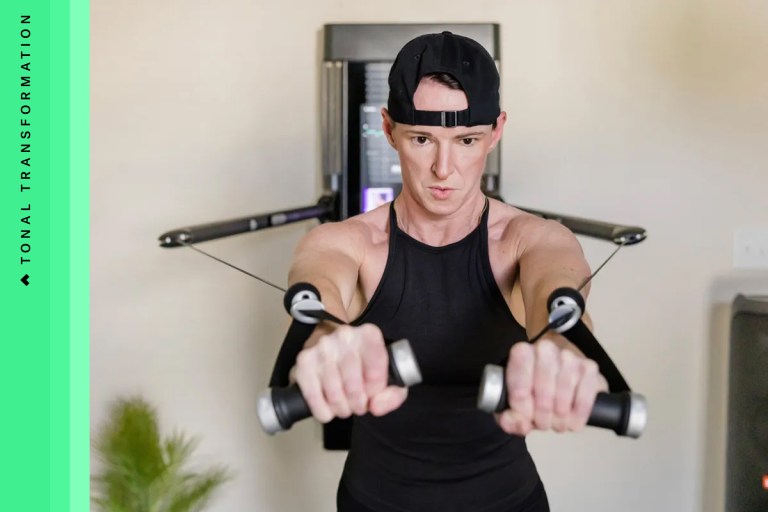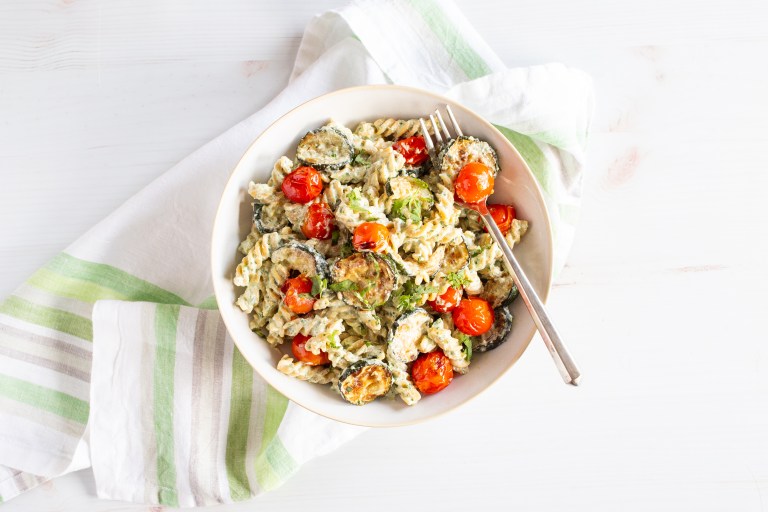Tonal’s Toughest Program Is Here: What You Need to Know about House of Volume
Coach Joe Rodonis draws from his personal training style for Tonal’s highest volume program yet.

Every time you do a coach-led workout on Tonal, you’re completing a specific series of exercises in a particular order designed to maximize your results. In this series, The Why Behind the Workout, we break down the science behind a particular workout or program.
Here, we dive into House of Volume, a month-long program that includes more pounds lifted by the end than any program on Tonal to date, with coach and certified personal trainer Joe Rodonis.
Who It’s For
House of Volume is an advanced-level muscle-building program inspired by Rodonis’s go-to training methods, and may be the hardest program ever built on Tonal due sheer number of reps and short rest periods. The four-week program challenges you to bust through training plateaus to enhance both strength and muscular endurance with steady increases in weight and reps each week.
“This program is about volume accumulation. It puts you in the 12 to 20 rep range with short rest. You’re going to improve your work capacity so you can feel unstoppable.”
Coach Joe Rodonis
“When you’re working in the 8 to 12 rep range and you’re pushing a lot of weight, you’re working in an intensification phase,” says Rodonis, who explains that an intensification phase focuses on building strength by using heavier loads, as opposed to an accumulation phase, which increases reps with lighter weights. “This program is about volume accumulation. It puts you in the 12 to 20 rep range with short rest. You’re going to improve your work capacity so you can feel unstoppable.”
Programs such as Divide and Conquer: Level Up or Power Build focus on heavy loads, more rest, and lower rep ranges to build explosive strength and power. House of Volume is packed with supersets and tri-sets, utilizing back-to-back movements on short rest, and features compound movements that challenge your muscles and your heart rate. “This is exactly what I did to put on a bunch of mass,” Rodonis says. “It’s about lifting heavy and moving fast with high volume.”
The Goal
A highly challenging program like House of Volume isn’t only about building muscle and stamina, Rodonis says. The long term-benefits are developing discipline, consistent habits, and a healthy relationship with failure.
“Failure is a data point,” he says. “It tells you to take inventory and understand why that failure happened. This level of training gets me excited because it’s going to be hard, so it requires you to lock in. Maybe you curb your drinking because it’s going to hurt your performance. You think about getting your diet on track so you can have enough energy. You don’t want to let yourself down.”
How it Works
The challenge in this program, as the name suggests, is managing the intense volume, which is more than any other program previously designed on Tonal. “It’s going to be pretty aggressive,” Rodonis explains.
In House of Volume, you’ll complete four workouts per week for four weeks. Each week, there are two days emphasizing upper-body lifts, one day devoted to lower-body work, and one full-body session. The two upper-body days are split into a chest and back focus on Day 1 and an emphasis on shoulder work on Day 3.
The first block of each session begins with a superset that includes a primary compound lift that’s considered your main lift of the day. For example, Day 1 of each week begins with a bench press-to-pushup superset. The key, Rodonis says, is that you move from the first to the second movement with little-to-no rest. The goal of these supersets is to improve your aerobic capacity and to push your muscles to near failure. The demand forces your muscles to adapt, resulting in new growth.
Your main lift in Block 1 will always be the primary driver for that day’s session. The subsequent exercises in the second and third blocks will support your main focus. The fourth block in each session consists of high-rep accessory work that also assists in stimulating hypertrophy and supporting your main compound lift.
“There are easier programs to do,” Rodonis says. “This program is not going to be for everybody and it’s going to take a tough mentality. You need to be able to meet yourself and be okay with failure, then push past where you are. You have to level up.”
If you’re bold enough to take on the challenge, here’s what you can expect.
Key Sequences
The highlight of each session is always the superset featured in the first block. “That’s where your money is at,” Rodonis says.
Bench Press-Pushup
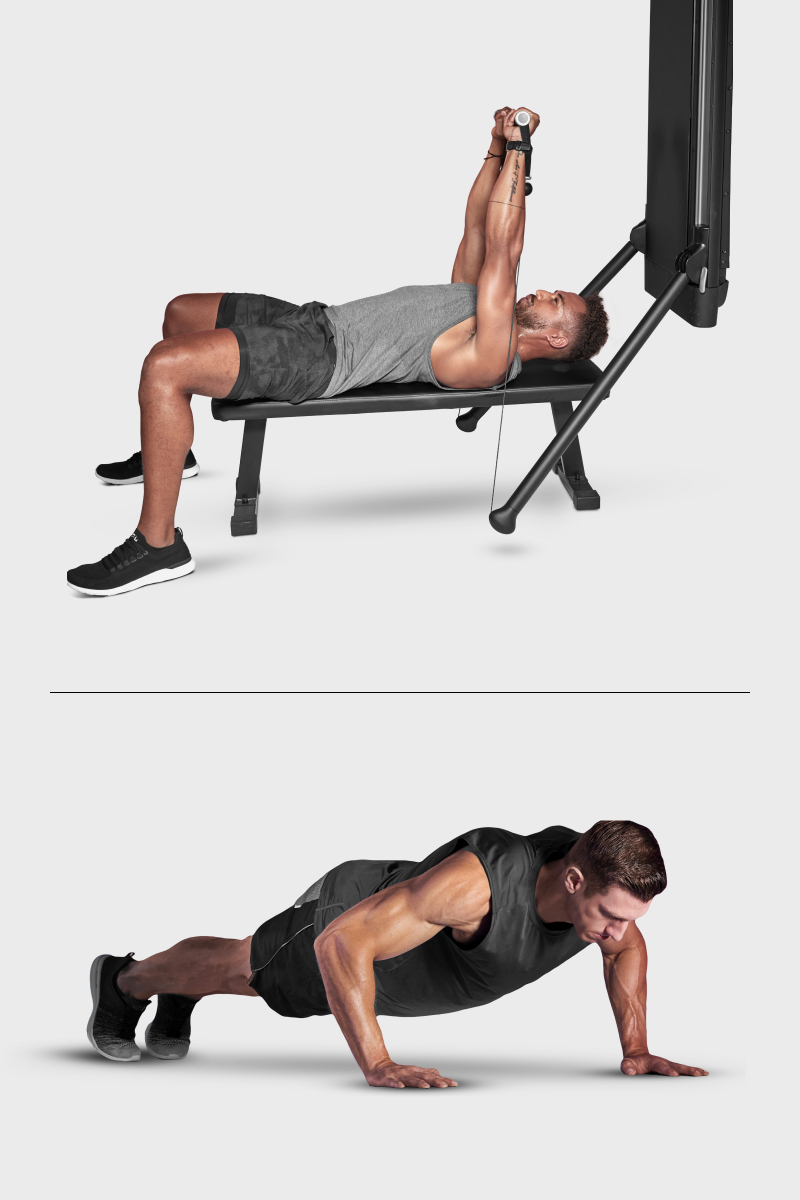
Together, these back-to-back pressing movements create a foundational pairing to attack your chest muscles. The bench press replicates a drop set, decreasing the reps for the first three sets while increasing the load, then finishing with a high-rep burnout in the fourth set. Rodonis explains that your goal is to move on to the pushups quickly, inviting your muscles to reach failure.
Standing Overhead Press-Bicep Curl
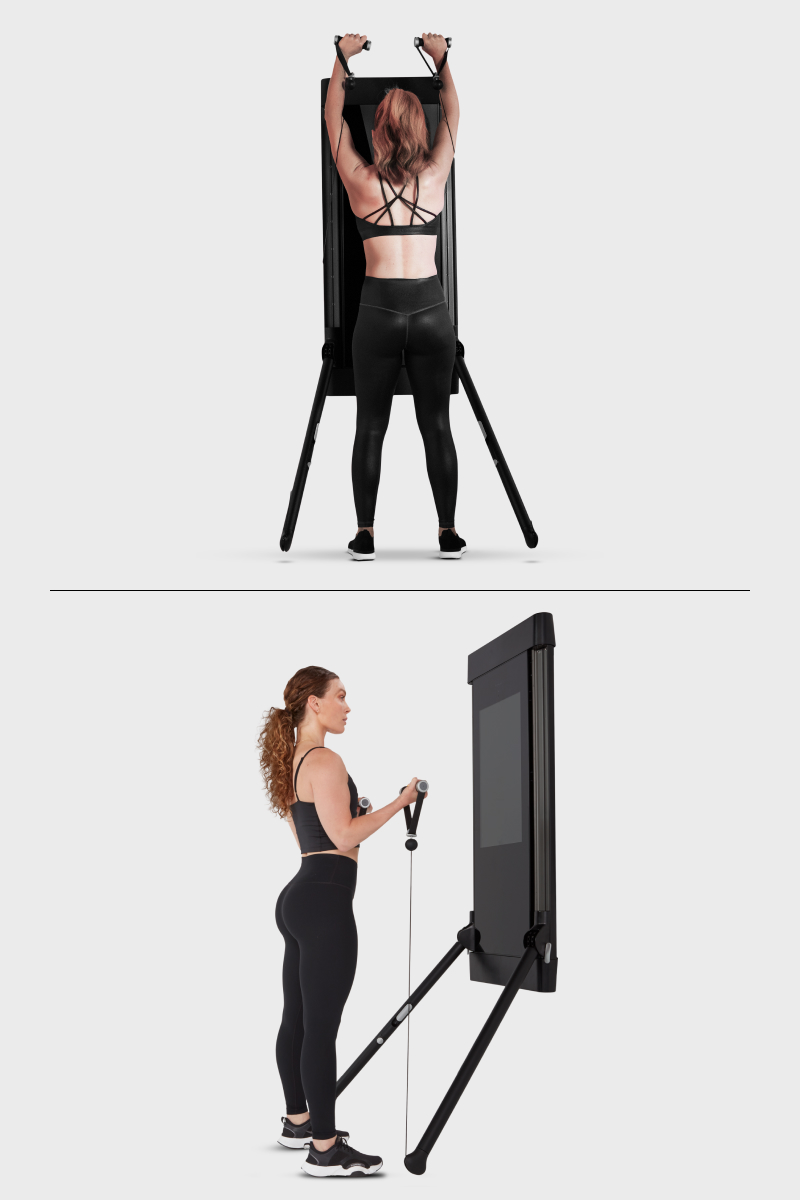
This combo targets your anterior delts—the front shoulder muscles—and your biceps. “This is just a nasty sequence,” Rodonis says of this superset that you’ll encounter on your second upper-body session each week. “It feels great and you’ll get a massive pump.”
Neutral Grip Deadlift-Bench Press
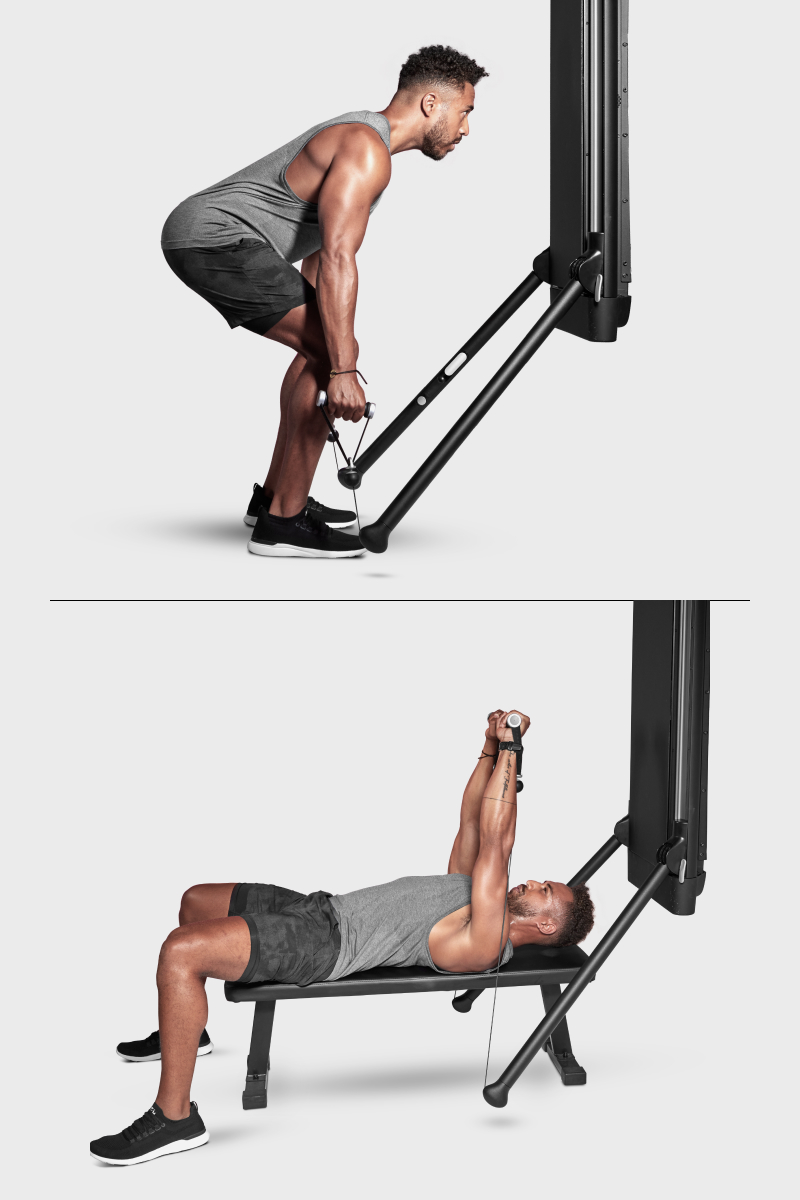
This total-body pairing combines two heavy compound movements performed back-to-back on short rest to challenge your cardiovascular system. The goal, Rodonis says, is to challenge your muscles to push heavy weight for an extended period of time, increasing time under tension and improving work capacity.
What To Do Next

If you’re feeling beat up after an intense program like this one, utilize recovery weights in your next session. Take a break from heavy volume training with a session that restores blood flow to ailing muscles with a combination of on-Tonal moves and off-Tonal stretches. The lower intensity will help you recharge for your next hard push.

Prevent overuse injuries with this full-body session. You’ll practice upper-body push, pull and rotational core moves on Tonal as well as off-Tonal lower-body moves.

This full-body deload uses light lifts and dynamic stretches to accelerate recovery while practicing efficient movement mechanics so you can hit your next hard session feeling refreshed.

After a high-volume program like House of Volume, Rodonis suggests changing your focus to building power with a program that offers more rest and lower rep schemes. “Your lunges and muscles are going to be able to work much longer so now your power output can only improve,” he says.

This program shifts the emphasis from volume accumulation to athletic performance, and is designed to improve strength and explosive power, especially in the glutes, hamstrings, and chest. Power Build uses the conjugate method, focusing on lower-speed, heavy lifts for two days to build strength, and high-speed, lighter lifts for two days to practice power output.
